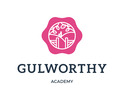

Intent
At our academy, we have chosen a curriculum for art with the intent that our children will, from the very beginning of school, develop a sense of creativity, along with high level of skill and ability to apply that skill. We aim for our children to become confident artists, comfortable in expressing their thoughts and feelings through the medium of art and celebrate those children with natural artistic flare.
We will deliver a curriculum that:
Implementation
The curriculum is led and overseen by the art lead. As art lead, a regular program of monitoring, evaluation and review and the celebration of good practice will contribute to the ongoing commitment to evolve and improve further. The curriculum incorporates the statutory requirements of the National Curriculum 2014. Other experiences and opportunities are designed by teachers to best meet the learning and developmental needs of the children in our school.
Impact
Each pupil will:
EYFS
From the very beginning children are encouraged to represent their own ideas, thoughts and feelings through their exploration of Expressive arts and design. Children will do this by safely using and exploring a range of materials, tools and techniques, experimenting with colour, design, texture, form and function. Encouraging attitudes of curiosity and questioning as well as skills and techniques is important when supporting the progression of the children’s creativity and confidence in their ideas and skills. The process and development of skills is valued equally to the final product and a balance of opportunities for children to explore process and not focus solely on final products are given to ensure a clear development of skills across the year.
The Curriculum Leader for art is: Mrs Mammatt
Long term overview plan for art at Gulworthy
Progression of knowledge and skills in art
Intent
At our academy, we have planned our Design and Technology (D&T) curriculum with the intent that our children will gain an enjoyable experience of DT and one which systematically improves their knowledge, skill and understanding in the subject. We aim for children to gain a practical understanding of the world around them, aware of how design and manufacture influences their lives and become resilient, independent, creative thinkers, technically proficient at the taught content, and have a good understanding of the need for high level finish. Children are enabled to become increasingly mature in their consideration of:
User – children should have a clear idea of who they are designing and making products for, considering their needs, wants, interests or preferences. The user could be themselves, an imaginary character, another person, client, consumer or a specific target audience.
Purpose – children should know what the products they design and make are for. Each product should perform a clearly defined task that can be evaluated in use.
Functionality – children should design and make products that function in some way to be successful. Products often combine aesthetic qualities with functional characteristics. In D&T, it is insufficient for children to design and make products which are purely aesthetic. Design Decisions – when designing and making, children need opportunities to make informed decisions such as selecting materials, components and techniques and deciding what form the products will take, how they will work, what task they will perform and who they are for.
Innovation – when designing and making, children need some scope to be original with their thinking. Projects that encourage innovation lead to a range of design ideas and products being developed, characterised by engaging, open ended starting points for children’s learning.
Authenticity – children should design and make products that are believable, real and meaningful to themselves i.e. not replicas or reproductions or models which do not provide opportunities for children to make design decisions with clear users and purposes in mind.
We will deliver a curriculum that:
Implementation
The D & T Subject Leader oversees the subject, to promote continuous improvement by leading a regular program of monitoring, evaluation review and sharing of good practice, as well as undertaking regular self-improvement and development activities. The curriculum incorporates the statutory requirements of the Design and Technology programs of study and other experiences and opportunities which best meet the learning and developmental needs of the children in our academy in the following ways:
Investigative and Evaluative Activities (IEAs) where children learn from a range of existing products and find out about D&T in the wider world;
Focused Tasks (FTs) where they are taught specific technical knowledge, designing skills and making skills;
Design, Make and Evaluate Assignment (DMEA) where children create functional products with users and purposes in mind. Through IEAs and FTs children are equipped with the knowledge, understanding and skills to engage successfully and with increasing independence in a DMEA. • The blocking of the subject allows children to focus their attention on developing the skills they need for producing high quality products which fully meet the design brief.
Where appropriate links with local food and nutrition, marketing, design and engineering experts, to bring the outside world into the children’s classrooms and create memorable learning experiences.
Impact
The Design and Technology curriculum will:
EYFS
Design and Technology sits within the areas of Understanding the world and Expressive arts and design. From an early age, the children at our academy learn to develop and make sense of their physical world through opportunities to explore, observe and find out about technology. They will do this through designing and making projects and experimenting with different materials. The process and development of skills is valued equally to the final product and a balance of opportunities for children to explore process and not focus solely on final products are given to ensure a clear development of skills across the year. All our learning opportunities are designed to develop children’s interests and to build upon these with exciting and enjoyable learning experiences.
Our Design and Technology lead is: Tamsin Mammatt
Long term overview plan for DT at Gulworthy
Progression of knowledge and skills and vocabulary in DT